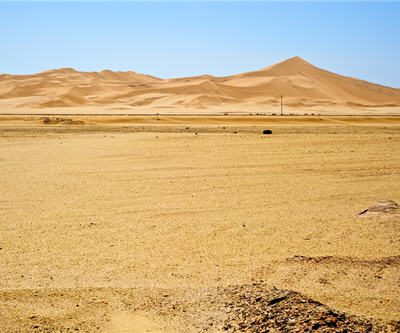Mysterious uranium project partially revealed in Namibia

Namibia’s government released an environmental study of the Zhonghe uranium project two years after it was completed and four months after the licence was issued.
The Namibian Chamber of Mines’ Uranium Institute disclosed the Environmental Impact Assessment (EIA) prepared by Risk-Based Solutions, the consulting arm of Foresight Group Namibia (PTY) Ltd., on its website last week.
The EIA study was completed in April 2011. Despite a mining licence for the Zhonghe project being issued on Nov. 30, 2012, there have not been any compulsory public discussions of this project and its EIA at all.
Very little is known about the proposed uranium mine so far.
The project operator is Zhonghe Resources (Namibia) Development (Pty) Ltd, a subsidiary of China Uranium Corporation. CUC owns 58% and the remaining 42% belongs to a local company.
The Zhonghe licencing area is located in the Namib desert, with the Rossing uranium mine and Husab uranium project (owned by another China-based company, China Guangdong Nuclear Power Holding Corp.) in the immediate vicinity of it.
No uranium reserves/resources associated with the project have been reported to date. Average uranium grade is 230 ppm U3O8 which is extremely low for this type of uranium deposit. Presumably, life of mine will be 10 to 15 years with a production capacity of 700 to 1,000 tonnes of uranium per year. Total project investment is estimated between $600 to $700 million.
The company plans to implement a conventional open-pit mining method combined with heap leaching of extracted ore.
The payback period based on the actual commodity prices, from the beginning of 2011, may be around five to eight years.
At a glance, this project does not look feasible with current uranium prices.
However, keeping in mind that the majority owner of Zhonghe is one of several China-based state-owned companies which are hunting for uranium throughout the world, it is very likely that this uranium mine will be commissioned in the foreseeable future.
Image: Shutterstock.com
More News
{{ commodity.name }}
{{ post.title }}
{{ post.date }}

Comments